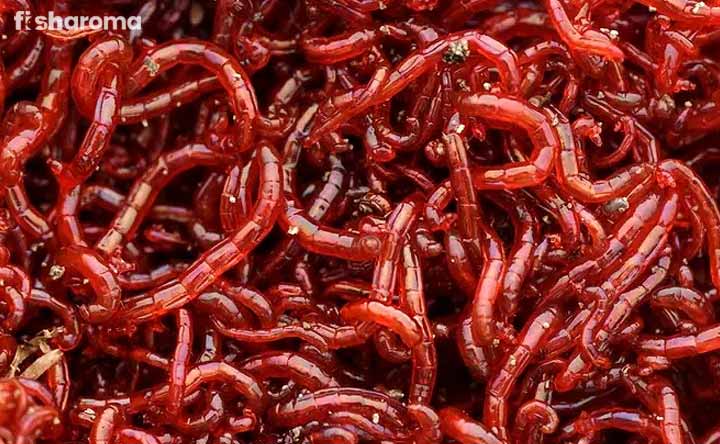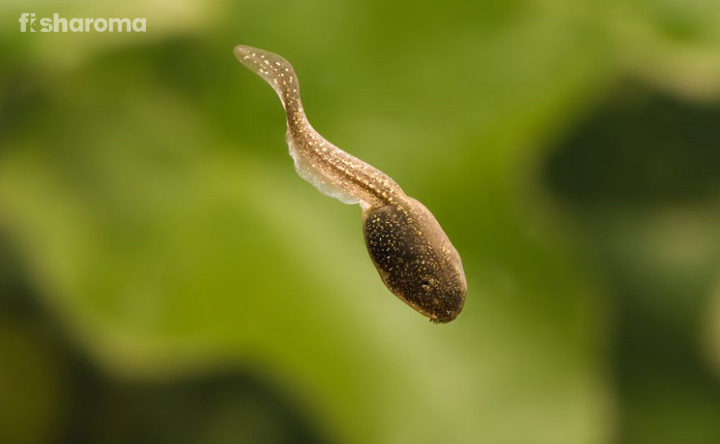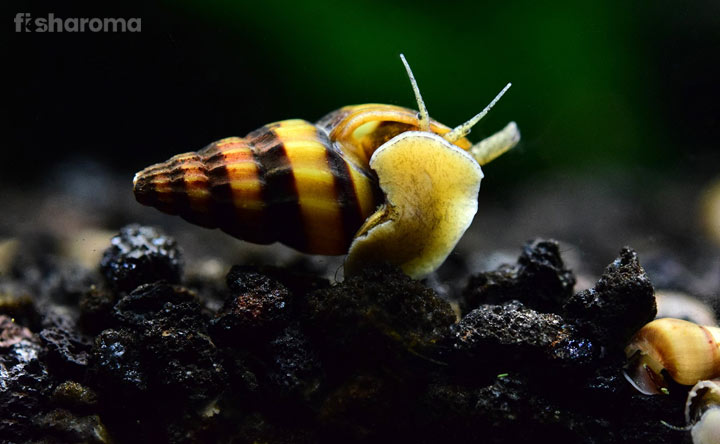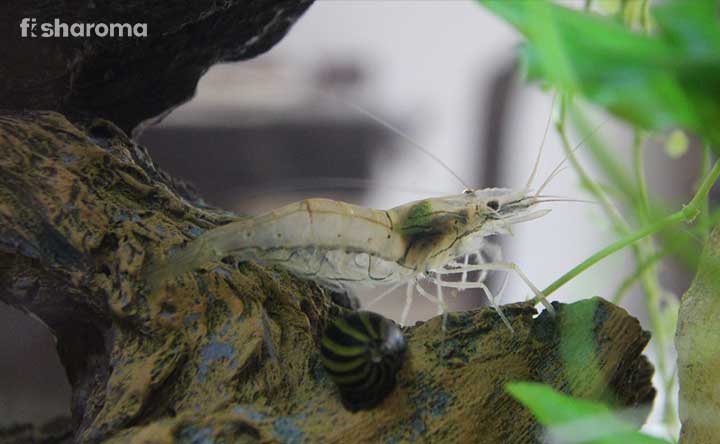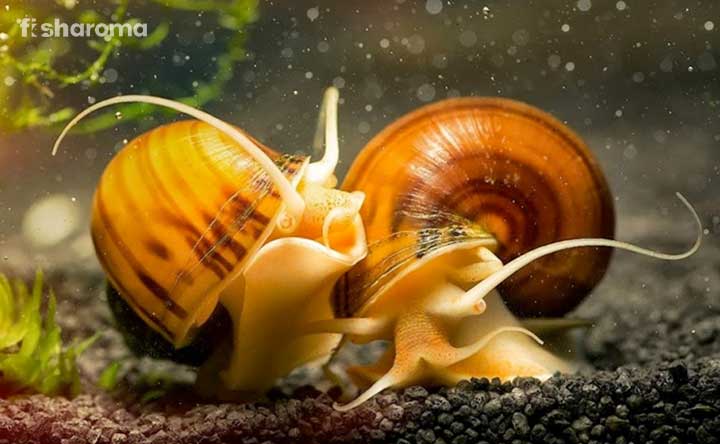Mexican Dwarf Crayfish – Care Guide of this Magnificent Species
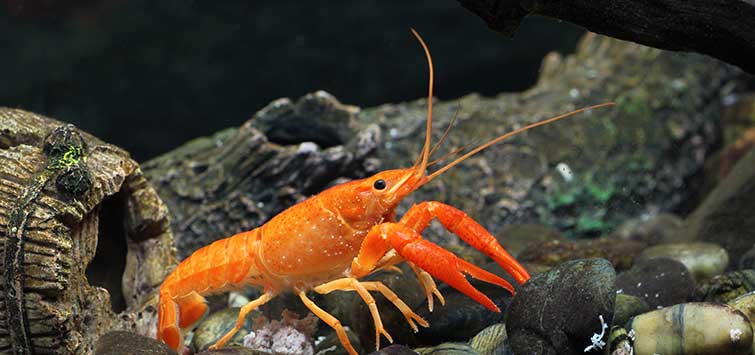
- Origin & Habitat of Mexican Dwarf Crayfish
- Appearance of Mexican Dwarf Crayfish
- Behaviour of Mexican Dwarf Crayfish
- Lifespan of Mexican Dwarf Crayfish
- Diet of Mexican Dwarf Crayfish
- Tank Requirements for Mexican Dwarf Crayfish
- Water Type for Mexican Dwarf Crayfish
- Compatibility of Mexican Dwarf Crayfish
- Breeding of Mexican Dwarf Crayfish
- Mexican Dwarf Crayfish Diseases
- Summary
Having a non-fish aquatic pet in your aquarium adds a distinct dimension to it. Among the many choices for non-fish aquatic pets, one that stands out is the Mexican Dwarf Crayfish. Their amusing behaviour and bright colours are hard to not notice. But, as cool as they are to look at, rearing them at home requires skill. And to help you out with the same, we are presenting before you an in-depth care guide of Mexican Dwarf Crayfish.
Key Specifications of Mexican Dwarf Crayfish
Before getting into the minute details, let us take a look at the key specifications of Mexican Dwarf Crayfish.
| Scientific Name | Cambarellus patzcuarensis |
| Origin | Mexico |
| Lifespan | 2-3 Years |
| Colours | Orange |
| Temperament | Peaceful |
| Size | 2” (5 cm) |
| Diet | Omnivore |
| Family | Cambaridae |
| Compatibility | Mild |
| Tank Size | 10 Gallons minimum |
| Care Level | Moderate to difficult |
Overview
A member of the Cambaridae family, Mexican Dwarf Crayfish is one of the very few Crayfish species that you can host in your community tank. This is because most Crayfish are skilled diggers, cutters and cause a rampage by destroying tank plants and killing other fish.
There are a few varieties of Mexican Dwarf Crayfish, all with their own nicknames. The Cambarellus Patzcuarensis Orange Crayfish is also known as CPO Crayfish. Its scientific name has been derived from the place of its origin – Lake Patzcuaro in Michoacan, Mexico.
Origin & Habitat of Mexican Dwarf Crayfish
Evident from its name, the Mexican Dwarf Crayfish originated from Mexico. However, a large population of it also can be seen in the Southern parts of the US.
Speaking of their habitat, they are usually seen in small ponds and lakes and occasionally in streams and rivers as well. They prefer living in slow-moving shallow water with thick vegetation surrounding them. It should be noted that these crustaceans are extremely hardy and can adapt to a wide variety of environments.
Appearance of Mexican Dwarf Crayfish
To put it simply, they look like miniature lobsters. They are characterized by their signature tail which helps them to swim around and their strong shelled body.
Their head acts as a protective gear for them. In addition, they also boast of some sharp horns on their head which they can use to not only hunt but to protect themselves from predators. They have 19 limbs, all of which have their distinct tasks. Besides, they also have five pairs of ambulatory legs. While the first four help them walk, the last one is used for clawing, although they aren’t too strong, thereby ensuring the safety of other fish who reside with them.
To carry the food to their mouth, they rely on their three pairs of maxilliped limbs. They use their antennules and antennae that help them in exploring their surrounding and in smelling food.
There is a prominent division between their pleon and large cephalothorax. Underneath their tail, there are numerous small fins which help them swim.
Size of Mexican Dwarf Crayfish
As you can guess by their name, they are pretty small in size. They are three times smaller than a standard Crayfish. Usually, they are 1.6-2” (4-5 cm) long. Baby Mexican Dwarf Crayfish are 2 mm long.
Colour of Mexican Dwarf Crayfish
The body of a Mexican Dwarf Crayfish is covered with strong chitin orange carapace. Some variants even feature red hues on their bodies.
Some variants can also come in brownish-grey colour with black or brown markings. These variants are excellent at camouflaging and blend with the surroundings. There is also a rare blue variant of this species.
They have protruding eyes that are black in colour.
Behaviour of Mexican Dwarf Crayfish
Mexican Dwarf Crayfish are extremely active and love exploring their surroundings. Therefore, provide driftwood, caves, rocks, and aquatic plants in their tank. These objects and plants will also come in handy when Crayfish shred their exoskeleton since they feel highly vulnerable during this time and are in the lookout for hiding spots. This process is known as moulting. While young Crayfish moult 3-4 times a week, older ones do once or twice a year. It helps them regenerate lost limbs.
Don’t worry about cleaning up their exoskeleton since they themselves would take care of it by consuming it as it is a rich source of calcium for them.
You will mostly notice your Crayfish crawling on the substrate, although they are perfectly capable of swimming. Crayfish can move in an unpredictable fashion, which means it is extremely difficult to catch hold of them. In case of danger, they bend their pleon together with telson to move quickly in a backward fashion.
Another great aspect about them is that they are excellent tank cleaners. They have a dynamic yet peaceful personality. They are pretty amicable and would occasionally scare off their tankmates by intimidating them with their claws.
Lifespan of Mexican Dwarf Crayfish
The average lifespan of Mexican Dwarf Crayfish is 2-3 years. Poor quality of water, bad living conditions and insufficient supply of proper diet will further shorten their lifespan.
Diet of Mexican Dwarf Crayfish
They are not picky eaters and their scavenging nature will make them eat whatever you provide them with. They are omnivorous and require a healthy dose of both vegetables as well as meat.
When it comes to artificial foods, one thing that you should absolutely make sure while feeding them is to check whether the food that you are giving them contains copper or not. Many commercial fish foods and medications contain copper which can prove fatal for them. Therefore, always check for the ingredients on the artificial food packaging before feeding them.
As we said earlier, they will eat their exoskeleton each time they moult. Moreover, they will also consume their deceased tankmates.
An ideal diet for them should consist of the following:
- Earthworm
- Bloodworm
- Algae Wafer
- Pellet
- Black Worm
- Brine Shrimp
- Pea
- Cucumber
- Zucchini
- Carrot
- Spinach
You can feed them both live and frozen food. However, don’t overfeed them.
Make sure to clean and blanch the vegetable before feeding them to your Mexican Dwarf Crayfish
Tank Requirements for Mexican Dwarf Crayfish
For Mexican Dwarf Crayfish, replicating the natural habitat in their artificial tanks will not only keep them healthier, but it will also keep them active. Therefore, keep the following points in mind while building a tank for them:
Tank Size
Make sure that they are living in a 10-gallon tank. Try not to keep more than 2-3 Mexican Dwarf Crayfish in a 10-gallon tank. If you want to keep more, then look for a larger tank.
Substrate
Try and get either sand or gravel for the substrate since they love to dig and crawl through them.
Filter
Invest in a hang-on back filter, a canister filter or a sponger filter for your Mexican Dwarf Crayfish tank since it will protect them from nitrates and ammonia. Make sure that the intake filter is covered and that the currents generated by the filter aren’t too strong for them. The water must be well-aerated.
Introduce your Mexican Dwarf Crayfish to your tank only when it has been cycled at least once.
Ornaments
As we said earlier, these crustaceans love hiding. Therefore, try and provide rocks, caves, castles, and driftwood in their tanks.
Presence of Flora
Since their natural habitat is filled with thick vegetation, make sure to include hardy, non-toxic plants to your tank. If the plants are too delicate, they will be nipped by your Crayfish. So, keep that in mind. Java Moss and Hornwort are ideal options for them.
Cleaning Method
Although they are excellent at cleaning the tank and consuming leftover foods, you can’t completely rely on them for cleaning your tank. So, clean your tank at least once a month. While cleaning, make sure not to use any heavy chemicals or soap-based material since their residue would harm your pets.
Just wipe the interior walls with a soft cloth dipped in warm water. Wash the substrate under running water and clean the rocks, castles, and other ornaments with a brush.
Also, when you clean the tank, make sure that you put your Mexican Dwarf Crayfish in a bucket with a lid so that they can’t escape.
Water Type for Mexican Dwarf Crayfish
Now, let us understand the points to keep in mind while arranging for the water for the tank where you will host these magnificent creatures.
Temperature
Since they mostly live in pond, lakes, and streams, it would be ideal if you replicate the same warmth in the temperature of their tank water as their natural habitat. Therefore, try to set the temperature of the tank water at 60-75° F (16-24° C).
pH Level
Try to keep the pH level of the tank water close to neutral. 7 would be the optimal value although they can adapt to residing in 5-8 as well.
Hardness
The carbonate hardness for the tank water should be 1-15 dKH. The general hardness should be 3-25 dGH.
Mineral Level
They don’t do well in waters with a high level of ammonia and nitrate content. This is why we asked you to install a filter in your tank. Also, we must remind you again the importance of cycling your tank before introducing these lovely creatures. This will be important for their sustenance. The TDS level should be 100-500.
Replacement Procedure
We strongly advise you to replace 25 per cent of the tank water weekly. Don’t change the entire tank water altogether as it would disrupt the ecological balance of your aquarium. In addition, each time you replace the tank water, you need to ensure that the new batch of water also has the same temperature, pH level, general and carbonate hardness, and mineral level as that of the existing batch of the water.
Compatibility of Mexican Dwarf Crayfish
Despite their peaceful demeanour, they can get aggressive at times. So, it is not ideal for keeping them with small fish. Even if they don’t deliberately harm them, it is not outside the realm of possibility that they wouldn’t accidentally pinch or scar them with their sharp claws while hunting for food.
Suitable Tankmates for Mexican Dwarf Crayfish
Some of the ideal tankmates for them are as follows:
- Congo Tetra
- Swordtail
- Ember Tetra
- Harlequin Rasbora
- Neon Tetra
- Hatchetfish
- Celestial Pearl Danio
- Guppy
- Rummy Nose Tetra
- Chili Rasbora
- Sparkling Gourami
- Platy
If you have a very large tank, then you can keep them with Bettas.
Unsuitable Tankmates for Mexican Dwarf Crayfish
Try and avoid keeping them with small invertebrates since they would become their predators, especially Bamboo or Baby Shrimp. However, you can keep them with Amano Shrimp and Red Cherry Shrimp if you can provide them with enough space.
Do not keep them with large Crayfish or Cichlids since your Mexican Dwarfs will be eaten up by them.
Breeding of Mexican Dwarf Crayfish
The breeding process of Mexican Dwarf Crayfish is very easy and doesn’t require any special settings. It generally takes place after they moult. The male pins the female on her back using his chelae, depositing his sperm into her. Next, the female carries the egg for around 1-4 weeks. After that, she lays 20-60 eggs in a hidden, covered area.
She then proceeds to fertilize the eggs by folding her tail under her body. At this time, she also forms a mucus sack around the eggs for protecting them. She continuously cleans the eggs and makes sure they are aerated.
The fries start emerging after 3-4 weeks and they stay with their mother for the first 3-4 months of their lives. During breeding, you need to provide a lot of hiding spots for both the parent and the babies.
While feeding them, try and scatter the food all around the tank so that it is easier for them to get hold of the food. They will eat the same food you provide to the adult Crayfish, however, be sure to cut the food into small pieces for them.
If you are too worried about other fish or other Crayfish eating the fries, you can move the mother and the fries in a separate tank as well for the time being.
Mexican Dwarf Crayfish Diseases
They are pretty healthy creatures and don’t have high demands when it comes to their health requirements.
They are one of the very few aquatic pets that don’t suffer from Ichthyophthirius multifiliis (Ich) which is marked by white spots in the body. Now, if you are keeping them with other species that are vulnerable to suffer from Ich, you need to keep in mind an important aspect. The medicine that is often prescribed for treating Ich involves dissolving a potion in the tank water. This potion usually contains copper, which is harmful to your Crayfish, So, make sure to transfer them to a separate tank before you add these medicines to your tank water.
Whenever you buy a Crayfish, make sure it is healthy and that it is not suffering from Crayfish plague. This disease is caused by water mould, but it doesn’t develop in your tank water. It usually happens when you introduce an already infected Crayfish to your tank. Never introduce a wild Crayfish to a closed environment and always buy from a trusted and reputed breeder. It is highly contagious and you should beware.
Make sure there are adequate swimming space and hiding spots for them since the lack of it can cause them stress and adversely affect their well-being. Poor water quality and stress can cause their health to deteriorate.
Summary
Mexican Dwarf Crayfish are one of the most non-demanding and easy non-fish pets that you can host in your aquarium. Their bright colours and eccentric behaviour make them a favourite among many aquarists. Their tank and dietary requirements are also nothing out of the ordinary. As long as you keep them with the appropriate tankmates (that we have mentioned above), they are good to go.
Interesting Facts about Mexican Dwarf Crayfish
- Among the five pairs of pleopods in Mexican Dwarf Crayfish, the first pair is stiffer in males while softer in females.
- They are usually active during evening and night.
- These little creatures often engage in play fights.
- If you notice them without a limb, don’t worry as they often lose their legs when they get stuck somewhere. They will regenerate new limbs soon.
Care Guides of Other Members of the Crayfish Family
If you are interested in learning how to rear some other non-fish aquatic pets at your home, then be sure to check the following articles from our website:
- Amano Shrimp Care Guide: Let these elegant beasts walk the substrate of your aquarium with grace. Take a look here for understanding their requirements.
- Ghost Shrimp Care Guide: These transparent ethereal creatures will be a unique addition to your tank. But before you bring them home, you need to learn about their lifestyle.
- Assassin Snail Care Guide: If snails are what you adore, then you need to bring one of these beauties home, but not before learning how to rear them.


